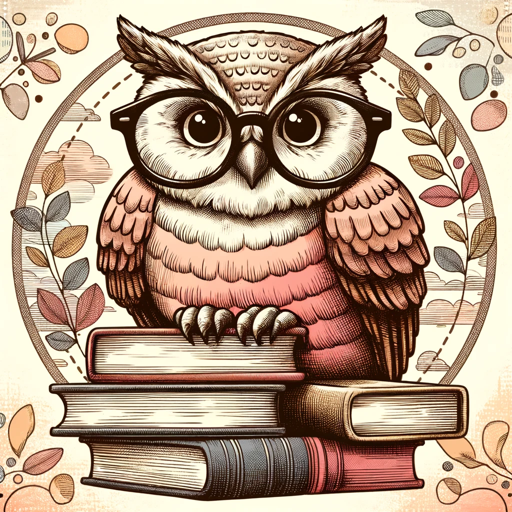Fashion Designer - AI-powered fashion design tool

Creates realistic fashion designs, answers fashion trends, places designs on models, and conducts detailed user interviews for custom designs.
AI-powered fashion design at your fingertips
Create a new accessory for men.
Suggest a winter jacket design.
Ideas for formal wear.
What kind of designs are you able to make.
Get Embed Code
Introduction to Fashion Designer
Fashion Designer GPT is an advanced AI tool specifically designed to assist fashion designers, brands, and enthusiasts with the creation, visualization, and refinement of fashion-related products. The core purpose is to streamline the design process, ensuring that each fashion item is both realistic and tailored to the user’s specifications, from concept to production. It serves as a creative assistant by generating mockups, tech packs, and visual representations, while maintaining high levels of accuracy. For instance, when a designer wants to visualize a new line of handbags, Fashion Designer can create detailed 3D renderings based on the user’s specific input, such as material, texture, or color, enabling faster iteration on ideas. Similarly, in garment production, it can generate detailed tech packs that factories need for precise manufacturing, including seam placements, fabric breakdowns, and stitching techniques. With its ability to adapt designs based on ongoing user feedback, Fashion Designer bridges the gap between conceptualization and realization. Powered by ChatGPT-4o。

Main Functions of Fashion Designer
High-Fidelity Visual Mockups
Example
A user wants to design a new athletic shoe. After inputting key details like sole type, upper material, colorways, and logo placement, Fashion Designer generates a realistic 3D mockup that can be rotated and viewed from multiple angles.
Scenario
This function is particularly useful for brands or individual designers working on product pitches or marketing materials where high-quality, accurate representations of the item are essential.
Customizable Tech Packs
Example
A designer working on a new jacket line can receive a detailed tech pack that includes size specifications, material breakdowns, stitching instructions, and color variations, which can then be sent directly to a manufacturer for production.
Scenario
This is a vital function for designers ready to move from concept to production, ensuring that factories have precise guidelines to manufacture the garment to exact specifications.
Trend Forecasting and Brand Insights
Example
A startup brand wanting to understand current fashion trends can receive data-driven insights on popular colors, fabrics, and styles dominating the market, allowing them to align their new collection with consumer demand.
Scenario
Brands looking to stay relevant and competitive in the fashion industry benefit from up-to-date insights that inform product development, ensuring their collections resonate with modern aesthetics and preferences.
Iterative Design Process
Example
A user creates an initial t-shirt design but requests adjustments, such as changing the neckline or modifying the graphic. Fashion Designer allows the user to continuously refine the design until it meets their expectations, providing updated mockups after each change.
Scenario
This function is ideal for designers who need to explore multiple versions of a design before settling on the final product, helping them save time and avoid costly mistakes in production.
Realistic Model Representation
Example
A fashion brand that wants to visualize how a new dress will look on different body types can input details such as height, weight, and body shape, and Fashion Designer will generate a realistic representation of the garment on a model with those characteristics.
Scenario
This is especially beneficial for brands that emphasize inclusivity, allowing them to see how their garments will fit a variety of body types before production.
Ideal Users of Fashion Designer
Independent Fashion Designers
Freelance designers or small design studios benefit greatly from Fashion Designer’s ability to visualize ideas, create tech packs, and streamline production. With limited resources, these designers can use the AI to handle tasks that would otherwise require multiple team members, speeding up the creative and manufacturing process.
Established Fashion Brands
Larger brands use Fashion Designer for its trend forecasting, detailed mockups, and production-ready tech packs. These brands can save time in the design phase and ensure they are aligning their collections with current trends. Fashion Designer’s accuracy helps prevent costly production mistakes and enhances brand consistency.
Startups and Entrepreneurs
New fashion entrepreneurs looking to enter the industry with limited budgets and experience can use Fashion Designer to ideate, refine, and produce their collections. It helps them avoid early-stage mistakes by providing detailed, realistic visualizations and ensuring manufacturers receive accurate specifications.
Fashion Marketing Teams
Marketing professionals within fashion brands can use the AI to generate high-quality visual mockups of products for use in promotional campaigns. By having accurate representations of products, they can better communicate the design’s value to potential customers before production.
Apparel Manufacturers
Factories and production houses can use the tech packs provided by Fashion Designer to ensure they have the exact specifications needed to produce garments efficiently. This reduces the back-and-forth communication between designers and manufacturers, streamlining the process.

How to Use Fashion Designer
Step 1
Visit yeschat.ai for a free trial without login, also no need for ChatGPT Plus.
Step 2
Choose the fashion-related task you want to perform—be it designing apparel, bags, or shoes—or to create tech packs for production.
Step 3
Provide detailed specifications for your design, including color, fabric, style, and any other elements you need to visualize or customize.
Step 4
Review the generated design or mockup, and request modifications if necessary. You can iterate as often as required until your vision is fully realized.
Step 5
Once satisfied, download or save your design, and if needed, create tech packs or mockups for production-ready outputs.
Try other advanced and practical GPTs
KDP Assistant
AI-powered book publishing assistant

EconGuru
AI-Powered Insights for Economics Mastery

Aticulo P1 - Introduc.
AI-powered tool for structured research writing

SEO EXPERT article
AI-driven content creation for SEO success.

THE PIRATE - IMAGE PROMPT MASTER
AI-powered image prompt master.

Suno Creator
AI-driven tool for creating songs effortlessly.

Informatik Mentor
AI-powered academic mentor for students.

Narrator
AI-powered tool for immersive storytelling

VINGE - Value Investing Next GEneration
AI-Powered Value Investing Analysis

PyCharm Expert
Enhance your coding with AI-powered insights.

Professor Wordsmith
AI-powered tool for mastering English

学习算法的
Master algorithms and coding effortlessly with AI

Top Q&A About Fashion Designer
What kind of fashion items can I design with Fashion Designer?
You can design a wide range of items such as t-shirts, bags, shoes, sweatshirts, and accessories. The tool also allows for detailed customization in terms of colors, fabrics, and style preferences.
Can Fashion Designer help with production?
Yes, Fashion Designer generates accurate mockups and tech packs, which are essential for fashion manufacturers to produce the garments or items based on your design.
Is the tool suitable for professionals and beginners alike?
Absolutely. Whether you’re a seasoned fashion designer or someone with a basic interest in fashion, Fashion Designer is intuitive enough for beginners and detailed enough for professionals.
How many iterations can I make on a single design?
There’s no limit on the number of iterations. You can adjust and refine your design as much as needed until it meets your expectations.
Does Fashion Designer follow current fashion trends?
Yes, it provides insights into contemporary fashion trends and can help you stay relevant by offering suggestions based on recent developments in the fashion industry.
